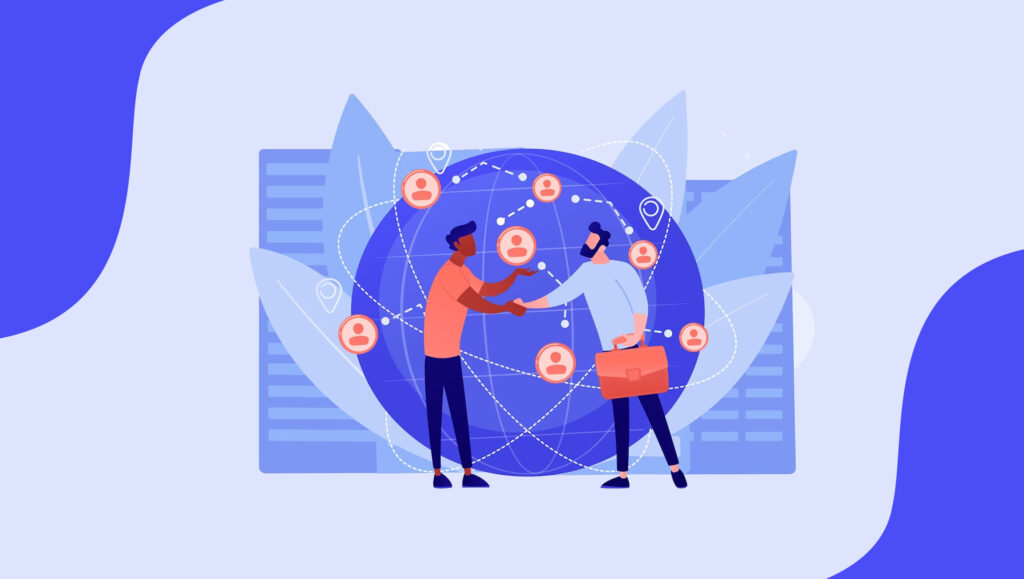The Channel partner ecosystem refers to the development of conventional channel programs that contributes value to a go-to-market strategy throughout the distribution chain. It involves more innovative and collaborative use of various service providers and products to deliver on customers’ entire experience with the product of the manufacturer.
Channel partners facilitate getting one’s product to more customers while they continue to generate revenue for themselves by selling ancillary products and services or distributing your products/ services.
A channel partnership can drive revenue and can also act as a vehicle for growing market share without needing to recruit and train more workers or invest in office tools, space, and equipment to assist those employees. A majority of the large technology enterprises use channels to reach their existing customer base.
Read More: SalesTechStar Interview with Ryan Neu, co-founder and CEO at Vendr
Stats to prove this are as follows:
- About 95% of Microsoft’s revenue flows through the company’s partners.
- The revenue of Shopify went beyond $1.5 billion in 2019, whereas its partner ecosystems raked over $6.9 billion.
- Atlassian’s ecosystem involves more than 700 channel partners that are responsible for one-third of all business.
- TrialPay used channel sales to go from 0 to about 10,000 clients in just two years.
These are indeed bewitching stories. However, here’s the hitch. As easy as channel partnerships may sound, they are not easy. Instead, they are constantly changing, complicated, and dynamic. Let’s untangle the knots and walk you through the concept of channel partnership ecosystems and their evolution.
Let’s start by weighing the pros and cons of channel partnership programs.
Pros of channel partnership programs
- Lower costs of customer acquisition.
- Get market share in territories without investing in infrastructures like staff, marketing sales, offices, and offices.
- Fortify your brand and credibility among clients by working with a reputable, trusted partner.
- Concentrate on core business.
Cons of channel partnership programs
- Low control over the process of sales renders it hard to predict revenue.
- Higher risk exposure for the brand reputation.
- Difficult to gain direct customer feedback
- Assisting partners often time can get overwhelming and time-consuming, as they need timely and consistent communication, onboarding and training resources.
Barriers to using a channel partner ecosystem
One of the biggest roadblocks to taking a ground-breaking initiative on a channel partner ecosystem is the mindset shift it demands. Ecosystem partners often come with an attitude, “we can do it on our own,” which needs to be changed to the mindset of “we can accomplish it together.” In all types of organizations, even those that are already partnered, there exists a trust gap. To justify partnering in the conventional distribution channel model, both sides need to win, and any reluctance needs to be addressed often with a clear ROI forecast.
While shifting to leverage a channel partner ecosystem in order to vend your offerings in the home improvement and construction industries, leadership needs to look beyond the way things have usually been done and start to line up the resources required to create and add value with others.
“Retooling” the human capital is another difficulty that occurs while embracing a channel partner ecosystem model. The managers, leaders, and implementers need to refocus day-to-day activities and go-to-market strategies to allow room for the bigger vision of partner ecosystem success instead of just relying on the success of the organization. Highlight relationship building that goes beyond the normal distribution channel setup. Concentrate on developing trust for a long-lasting ecosystem partnership system and collaborate on campaigns that foster reciprocity and success within the ecosystem built by you. You need to think beyond the limits of the brand and your company.
Read More: 5 Ways Data-Driven BDR Leaders Motivate Their Teams
Benefits of a Channel Partner Ecosystem
Let’s put into perspective the features of a conventional channel partner distribution model and channel partner ecosystem distribution model. On the one hand, the conventional channel partners model emerges as a value-add approach through the market verticals that are directly focused on the home improvement and building industry. An ecosystem partners model refers to a value generation approach through the market horizontals that intends to leverage providers within other industries and may, hence, provide for customers outside of conventional indirect sales distribution constraints.
Hence, the main benefits of the channel partner ecosystem entail the value of the following:
- Customer convenience
- Delivery decentralization, but centralization of goal between partners
- Customer loyalty enhancement
- Expansion of resources without seeing expansion in liabilities by gaining more abilities through skills, expertise, and tech.
Ecosystem-qualified leads and partner-influenced revenue are KPIs to gauge the channel partnership’s health. Certain organizations with channel partner programs rely on PRM (partner relationship management) tools to monitor revenue produced by channel partners. The tool helps enterprises register, handle, and track attribution for the channel partnership programs.
With channel partner ecosystems, you just need to think together and think creatively and smart to gain success.





















